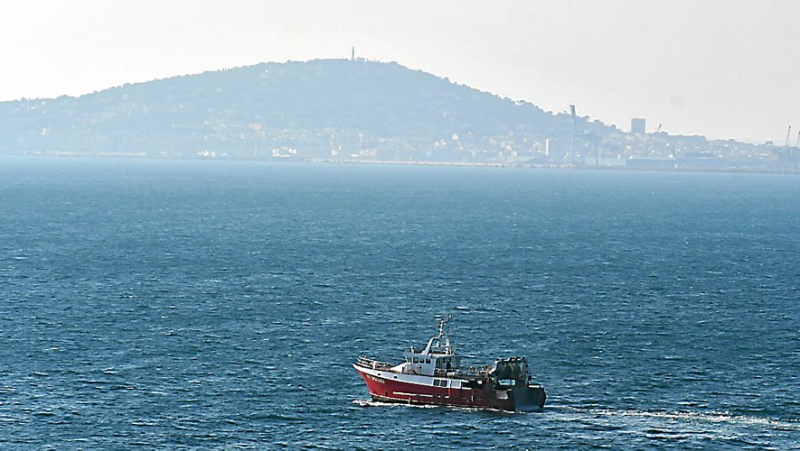After the fleet exit plan, towards a clearing for Sète fishing

“Les quantités de sardines et d’anchois sont là, mais ces poissons ne grossissent pas.” Midi Libre – JEAN-MICHEL MART
De nouveaux chalutiers sont arrivés sur le port de Sète. Mais le poisson bleu se fait attendre.
"She straightens the course." This is the encouraging observation noted by the prud’homie regarding Sète fishing. Indeed, the profession welcomes new arrivals among the trawlers of the second largest port in the Mediterranean for 2024. "Two new trawlers have just arrived from Marseille, we now have eleven active trawlers and two others on administrative hold", confides José Llinarès , advisor to the industrial tribunal and former director of the fishing port.
"We see more clearly"
"We can see a little more clearly", he estimates, while 2023 was marked by a painful fleet exit plan linked to the reduction of quotas at European level (25% of the fleet broken in 2023 as part of the WestMed plan). The auction was also impacted in 2023 with a drop in turnover of 13%. However, for 2024, the forecasts seem more optimistic with a turnover reaching 40,000 euros. per day, with 8 tonnes produced and sold daily at auction. Including octopus remains the first Sète product sold in volume, then sea bream and monkfish. The auction calls on fisheries outside the sector to maintain its balance.
What solutions for blue fish ?
"There, where we wait for answers, it’is on the blue fish", worries José Llinarès. This type of fishing has completely disappeared from Sète for three years. "The quantities of sardines and anchovies are there, but these fish are not growing." Local fishermen had to make do with size 4. In other words, it took between 36 and 91 pieces to have one kilo while size 1 in "provided" < /em>less than 15. Fishing for blue fish was therefore no longer profitable.
"Shellfish farmers have the same problem as us"
"But in Italy and Spain, they continue to fish sizes 1 !", notes José Llinarès on behalf of the industrial tribunal. Hence the incomprehension. "Shellfish farmers have the same problem as us with oysters, they don't eat, because there are less phytoplankton."& nbsp;And to remember that the sardine is larger in the Thau pond than at sea, even if it is of course present there in smaller quantities.
The Mona Lisa study by Ifremer, carried out with Amop (Mediterranean Association of Producer Organizations) presented in 2021, revealed that plankton was less nourishing due to climate change and at a lower contribution in nitrogen and phosphorus from the nutrients of the Rhône in decline. But it’s far from satisfying professionals.
"Global warming is everywhere, so why aren't there the same consequences in Italy and Spain where there are still 350 trawls, while in the French Mediterranean there are there are more than 40!" The industrial tribunal is calling for a new study on a European scale to elucidate the phenomenon across all the Mediterranean and is considering a meeting with the water agency to understand why phytoplankton is less rich at the river outlets.
To support fishing, the city of Sète decided to vote on March 25 for actions to support the sector in a strategy launched by the Regional Committee for Fisheries and Marine Farming of Occitanie ( CRPMEM). Particularly in favor of decarbonization, "aiming to mobilize national authorities to launch a study on the possibilities of using the Oleo 100 biofuel produced by Saipol for the Mediterranean fleet" , defended Mayor François Commeinhes. A fuel which currently poses a cost problem.
I subscribe to read more




